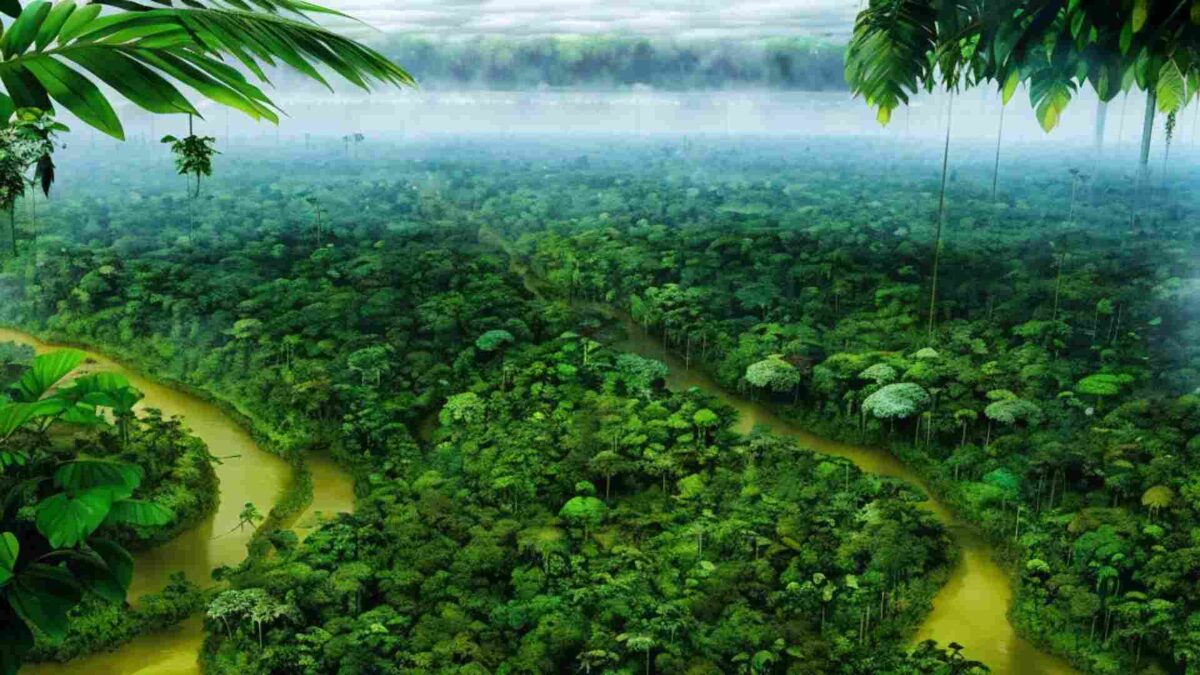Ecological Expertise of the Amazon and the Jungle Synergy Project in Peru
A New Chapter Begins in the Largest Biome of Peru
The Jungle Synergy Project takes root in the Amazon Rainforest — the largest and most ecologically significant biome in Peru. While Peru’s Amazonian region remains in better condition than neighboring Brazil or Argentina, the environmental trend is increasingly alarming. According to the Peruvian Ministry of the Environment, the MapBiomas Network, and RAISG, 2.6 million hectares — or 3.6% — of natural jungle vegetation have been lost over the past 37 years. In some areas, the damage is considered irreversible.
Main Causes of Environmental Degradation in the Peruvian Amazon
Illegal Deforestation and Resource Extraction
Deforestation, unregulated land use, and large-scale mining for gold and other minerals are the main drivers of degradation. As reported in the RAMI bulletin by Conservación Amazónica (ACCA), the Madre de Dios region alone lost 26.5 hectares of forest in December 2022, 8.24 hectares in January 2023, and 158.2 hectares by February 2023. Even rivers such as the Palma Real have changed course due to illegal dredging operations.
Large-Scale Infrastructure and Agriculture
In Loreto, significant infrastructure projects — including oil extraction in the Marañón Basin, hydroelectric construction, and commercial logging — have altered river systems, contributed to pollution, and accelerated deforestation. Fires caused by slash-and-burn farming methods further exacerbate the situation, especially when unmanaged or combined with modern machinery.
Global Significance of the Amazon Ecosystem
The Amazon is a global biodiversity powerhouse. Peru’s rainforest contains over 30,000 plant species, 2.5 million insects, and more than 2,000 bird species. Over 10% of the planet’s biodiversity resides in the Peruvian Amazon alone. According to the World Bank, the Amazon is critical for carbon sequestration and oxygen production, making it a vital component of the Earth's climate regulation.
Peru's Environmental Protections and Progress
Despite ongoing challenges, Peru has implemented significant conservation efforts. The Pacaya-Samiria National Reserve, located in Loreto, is one of the largest protected areas in the country and is home to species such as pink dolphins, anacondas, and rare birds. Oil drilling is prohibited in the park, and numerous public-private initiatives support forest restoration.
The Jungle Synergy Project: Community, Conservation, and Regeneration
The Jungle Synergy Project proposes a visionary approach to conservation: creating a “Synergy Zone” in which community landowners collaborate on ecological regeneration. These members share a commitment to sustainability, use modern low-impact technologies, and actively plant native medicinal trees and vines to restore populations lost over the past 30 years.
The project’s long-term goal is to gain recognition of the Synergy Zone as a private reserve, eventually earning state-level protection.
Empowering Local Communities for Sustainable Forest Management
The project includes local communities in conservation activities and promotes sustainable land use. Studies show that involving communities in forest management can significantly reduce illegal logging and environmental degradation. According to the World Bank, from 2004 to 2017, local participation in forest governance in Peru resulted in an 80-fold increase in protected forest area.
A Collective Mission for Global Impact
The Jungle Synergy Project stands as a model for how community-driven conservation can support the planet’s ecological health. By protecting biodiversity, preserving forest land, and empowering local people, the project contributes not only to the survival of the Amazon — but also to the well-being of our shared planet.
Our project expertise
About Us
Join this project
Contact

Research coordinated by IBC, MapBiomas Network and RAISG (Amazon Network of Social-Environmental Information with Geographical Reference) https://amazonia.mapbiomas.org/ Report of the Peruvian Ministry of the Environment (MINAM) https://www.gob.pe/institucion/minam/noticias/216142-minam-informa-sobre-incendios-forestales-registrados-en-la-selva-peruana-en-lo-que-va-del-ano RAMI reports prepared by Conservación Amazónica (ACCA) https://www.acca.org.pe/ IPCC (2018). Global Warming of 1.5°C. Special Report. Retrieved from https://www.ipcc.ch/sr15/ Food and Agriculture Organization of the United Nations (2020). The State of the World's Forests 2020. Forests, biodiversity and people - In brief. Retrieved from http://www.fao.org/state-of-forests/de/ World Wildlife Fund (n.d.) Amazon - Importance. Retrieved from https://www.worldwildlife.org/places/amazon
